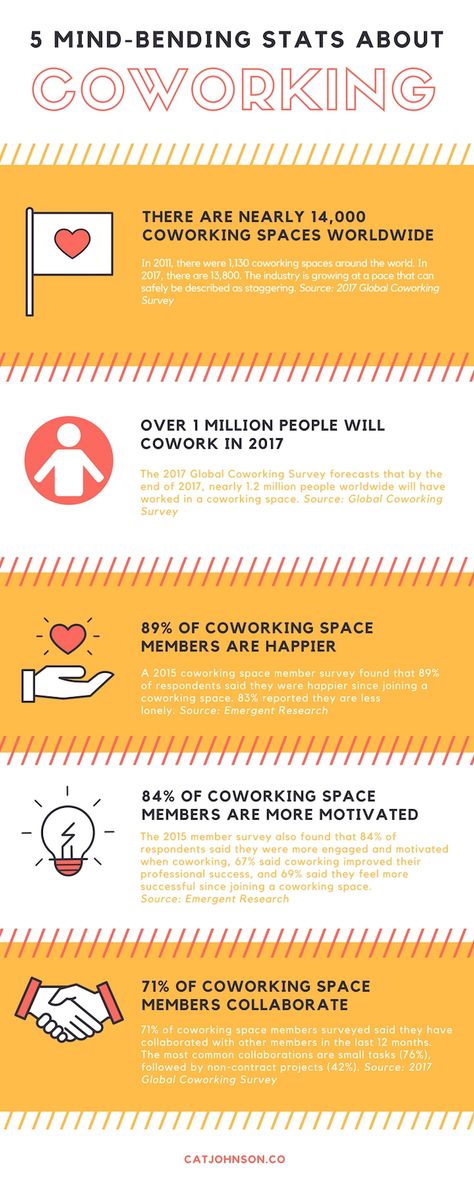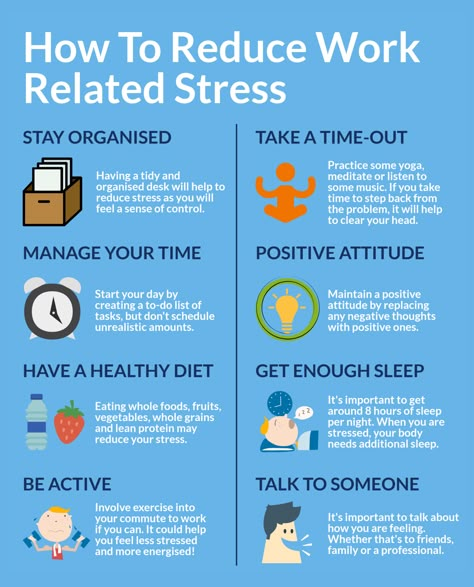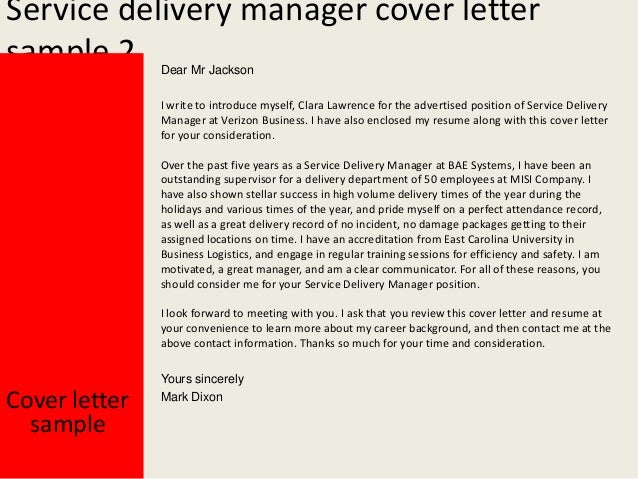Not feeling included at work
When you feel excluded at work: Speaking up Bravely
“It probably sounds trivial, but I can’t stand knowing that these conversations are happening without me.” That’s what Laura (not her real name — but she gave permission to share this story) told her coach about a frustration she was experiencing at work. Months into a new position, she still found herself “playing catch-up” on her own projects: decisions that she felt she should have been making were being made for her, in meetings she wasn’t invited to. “Am I doing something wrong?”
For Duncan (also not his real name), being left out came in a different form. “When we were in the office, it was hard enough seeing people socialize in their ‘cliques’ and feel like I wasn’t welcome to join in. In a way, it’s worse now that we’re working remotely [during the pandemic]. My Slack is a ghost town, and I only hear from people if I reach out first.” He asked his coach the same question: “Am I doing something wrong?”
Workplace ostracism
The social aspects of life at work — drinks with colleagues after work, casual conversation throughout the day, saying hello in the morning — carry different weight for different people. While not everyone craves close friendship with co-workers, or even desires more than simple cordialness, we all have a baseline need to feel seen, welcome, and safe.
When that need isn’t being met, what you’re experiencing is workplace ostracism: a pattern of being ignored, disregarded, or otherwise excluded. It can be as blatant as it sounds, or it can be as subtle as a shift in body language, eye contact, or tone. In its subtlest forms, it can leave the victim wondering if they’re imagining things or reading meaning where it isn’t there.
Why does ostracism happen?
When you’re being excluded at work, whether socially or professionally, it can seem as though there’s malicious intent. That’s what Laura experienced, saying, “It felt like someone somewhere had to be saying, ‘Let’s not invite Laura.’”
While purposeful ostracism with malicious intent does exist, it isn’t always the case. In unintentional ostracism, people don’t mean to exclude others, or even realize they’re doing it. They could be succumbing to affinity bias (our tendency to be drawn to people similar to ourselves), have a communication style that clashes with yours, or simply have different expectations for your working relationship, and not be aware that your expectations aren’t being met.
They could be succumbing to affinity bias (our tendency to be drawn to people similar to ourselves), have a communication style that clashes with yours, or simply have different expectations for your working relationship, and not be aware that your expectations aren’t being met.
Even when the exclusion is purposeful, the intent isn’t always clearly malicious, and may have more to do with the perpetrator’s self-esteem than with the victim.
Why does it matter?
To put it simply: everyone deserves to feel comfortable and safe at work. If that’s not happening, something needs to change.
If that’s not enough of a reason, consider these:
- The emotional effects of ostracism are very real, and can be severe. Loneliness, anger, shame — these all take a toll on a person.
- People who feel isolated at work are significantly more likely to quit their jobs, even when compared to people who report harassment in the workplace.

- The ways many people will naturally respond to exclusion, including avoidance, absenteeism, and hostility, will only make matters worse.
Addressing the issue
Fortunately, as Laura and Duncan both learned, there are effective ways to manage and cope with workplace ostracism. Use these steps as a blueprint for addressing it in your workplace.
Process the emotions
It’s normal to have a strong emotional response to being left out. Those emotions matter, and the time to process them is before you bring them to your manager, HR, or the co-workers(s) making you feel excluded. This can mean venting to a friend or trusted colleague (or Bravely coach!), working with a mental healthcare provider, or simply pausing, breathing, and acknowledging what you’re feeling.
Set a safe environment
Who you bring the issue to (your manager, HR, or the person directly involved) is up to you, and you’ll probably have a sense of what feels right in your situation. For example, if you’ve already tried talking to the person directly involved and it didn’t go well, it may be best to get in touch with your HRBP before things escalate further. If you have a strong and trusting relationship with your manager, they could be a great resource for talking through next steps.
For example, if you’ve already tried talking to the person directly involved and it didn’t go well, it may be best to get in touch with your HRBP before things escalate further. If you have a strong and trusting relationship with your manager, they could be a great resource for talking through next steps.
Once you know who you’re going to have the conversation with, set a specific time for it — put a meeting on their calendar, request the chance to talk, or whatever else feels right in your company culture. Don’t have the conversation impromptu or in an informal setting like the office kitchen, where the presence of other people might escalate tension.
Focus on impact
You may not know the intent of those ostracizing you, but what you do know (and what ultimately matters more) is the impact it’s having on you. Tried-and-true “I” statements (“I feel…”) are a classic way to keep finger-pointing and assumptions out of the conversation. Other effective tactics include:
- Describing your ideal outcome: “I want to know I have a say in decisions related to my projects.
 ”
” - Using a win-win mindset: “We both should be able to trust each other.”
- Asking questions: “Do you see things differently?”
For Duncan, asking questions was particularly impactful: “As soon as I asked my manager how she was reading the situation, I was glad I had come to her. She validated that things felt isolated for a lot of people right now: that it wasn’t in my head, but it didn’t necessarily have anything to do with me.”
Repair harm
As with any form of conflict, a vital stage is repairing harm. Repairing harm is not about punishment, making others feel guilty, or belaboring a conflict. Instead, it’s about taking next steps that productively address the negative impact.
In many cases, you’ll find that the conversation itself is a major step toward repairing harm: reaching a mutual understanding of what you want your working relationship to become, being able to express feelings that you’ve been constricted by holding onto, and knowing that you’ve been heard are all powerful outcomes in themselves.
This was the case with Duncan: “Getting my feelings out was a massive weight off. After that, it didn’t feel like an issue I had to fixate on, because I could focus on my job knowing I had her as an ally.”
Other times, you may want to get more specific about future action. That’s what Laura needed: “Once we talked it out, it wasn’t about, ‘you didn’t do this’ or ‘you did that.’ It was about, ‘Here’s what I need in order to do my job effectively. How can we both make that happen moving forward?’”
Final thoughts
There are other ways to cope with ostracism that you can turn to in addition to (or after, or even instead of) speaking up. These include staying connected to the purpose you get from your work and maintaining close ties to your support system outside of work. Keep these in mind as you take action that makes your life at work the best it can be — for yourself and others.
How feeling left out at work can affect your job
Five years ago, I quit what was in many ways my dream job. It was a permanent position with benefits, a combination I’d never had before.
It was a permanent position with benefits, a combination I’d never had before.
I quit for a really embarrassing reason: No one really talked to me.
Integrating into a new workplace is usually awkward, but feeling left out at work just never got better. There was no hostility, but my efforts to build rapport seemed to die on the vine. I woke up anxious every day and immediately begin to think of reasons to work from home. Eventually I started spending my days wearing earbuds; I knew I had to get out of there.
At the time, I felt like I was overreacting. But then I found a study on workplace ostracism that determined that, compared to victims of workplace harassment, people who were ostracized at work were actually more likely to quit their jobs.
The definition the researchers used resonated completely: “Workplace ostracism can include having one’s greetings go ignored, being excluded from invitations, noticing others go silent when one seeks to join the conversation, and the like. ”
”
We talked to some other folks who found themselves in the same situation, to find out how they navigated out of it, and what teammates can do to be more aware and inclusive.
The importance of being friendly, even if you aren’t friends
Feeling left out at work can sometimes feel like being transported back to high school. That was what it was like for Alice, when she was working at a large cosmetics company.
“It was an open office, so you could hear and see everything. A bunch of girls would go out to lunch or drinks after work, after talking about it all day. I was never invited.”
She clarifies that it isn’t really about the desire to do a group activity, and that she may not always have wanted to go — it’s about being obviously exclusive. “That’s just rude,” she says.
The study echoes Alice’s experience: “Receiving attention from others signals that one exists, matters to others, and affects others in that environment.”
So the next time you are making group plans, take the extra step of inviting people who don’t seem interested. They probably won’t tag along, but they won’t feel invisible either.
They probably won’t tag along, but they won’t feel invisible either.
Alice eventually left the position for a better job at a bigger company. She still doesn’t socialize with her co-workers there either, but there is none of the angst this time.
“No one really hangs out outside of work,” she says. “But it’s not personal.”
Find your people, even if they’re not sitting next to you
The desire to be part of a team isn’t something we can just shake off. The report explains that, “In contrast to other fundamental needs, such as self-esteem, control, or meaningful existence, the need to belong is almost entirely determined by our interactions with others.”
A few years into her job at a media company, it was clear to Laura that she did not belong. “It got to the point where I had to carbon-copy bosses on emails because if I didn’t, they would just be totally ignored,” she said. “It was just very isolating.”
Rather than leave her position, though, Laura instead found that sense of belonging in different departments. “I decided to find my people elsewhere, basically,” she says. “A pocket where my ideas and input was welcome and encouraged, and actively shift my job in the direction of those people.”
“I decided to find my people elsewhere, basically,” she says. “A pocket where my ideas and input was welcome and encouraged, and actively shift my job in the direction of those people.”
Teamwork is key to combat feeling left out at work, and leaders have responsibility
The study recommends that bosses “assist employees in learning more direct and effective methods of conflict resolution and managing their relationship tensions.”
This approach was exactly what Elizabeth needed, after she realized her team had made plans to completely shut her out of a promotion she thought was a sure thing.
“I arrived at a meeting with the whole department and I thought that I had the team’s backing,” she recalls. “And then it was announced that in fact they were going to support someone else taking the position.”
Watching her network dissolve in front of her was so destabilizing that Elizabeth went on a leave that lasted several years. While on this leave, she took a course where she realized the way she approached conflict was incompatible with the approach of the rest of the team.
“It helped me to get over that real sense of being on the outside for no reason,” she says.
Once she had this insight, she was able to return to the workplace she felt she’d never set foot in again. Her new perspective has changed the dynamic entirely.
“I ended up totally supporting the very person who I had the conflict with to begin with” she confessed. “They had it so right, about everything!”
*Names of sources have been changed to protect the privacy of individuals.
How employee engagement affects productivity, retention rates and other indicators
2/3 of US employees have below average levels of engagement. At first glance, this may not seem like such a problem. But you should take into account the fact that the presence in the company of the "right" corporate culture leads to improved well-being, well-being and productivity.
As it turns out, happy and healthy employees are an invaluable resource for companies. Increasing engagement is a strategic move. Whether you're hiring new employees or looking to increase your team's productivity, this complete guide will help you set the right course. But keep in mind that increasing the motivation and engagement of staff is not easy and not quick.
Whether you're hiring new employees or looking to increase your team's productivity, this complete guide will help you set the right course. But keep in mind that increasing the motivation and engagement of staff is not easy and not quick.
Why is employee engagement important?
We have already written about how a high level of employee engagement affects business results. From increased productivity to team commitment to work-life balance, an engagement strategy brings many benefits. In addition, it provides an opportunity to help team members work at full capacity at no extra cost.
But you don't have to take our word for it. Here's what the experts say about it:
- For at least half of your employees, money is not the most important thing. According to survey participants, they are willing to sacrifice up to 29% of their salary for the opportunity to do what they love. And as it turns out, increasing the transparency of information and improving feedback in the company makes employees happier, even if other factors remain unchanged.

- If employees are not motivated, there is a high probability that they will quit. 81% of people looking for a new job say they want to leave as soon as they feel they don't like the job anymore. And according to the results of another study, 80% of respondents seriously think about quitting as soon as the opportunity to move to a company with better working conditions turns up.
- Most people think of as more than just a job. 86% of professionals named learning opportunities as the most important thing an employer can give them. This proves that self-development is the key to a long career. That is, development programs, office fitness classes, and mentoring are not just ploys to attract potential candidates, but an example of actions aimed at increasing the level of engagement that your staff really needs.
- It's highly likely that your competitors prioritize engagement. Increasing employee engagement was named one of the top challenges facing HR this year.
 Nearly half (49%) of managers in this department will be tasked with finding new ways to increase employee engagement and productivity in 2019.
Nearly half (49%) of managers in this department will be tasked with finding new ways to increase employee engagement and productivity in 2019. - Increased employee engagement leads to a reduction in stress levels and the number of missed days. Experts say that high levels of employee stress reduce companies' weekly revenues by billions of dollars. Whatever your revenue, a low level of employee engagement will definitely not increase it.
Hundreds of studies, statistics and surveys prove that increasing employee engagement should be seen as a high priority. And all the above facts show us a clear picture: employees are the backbone of your company, and your success is directly dependent on their level of engagement.
It takes time to raise employee engagement from a low or medium level to a consistently high level. But even a small change can lead to significant results.
How to improve productivity
The first step to most goals is learning. And an integral part of this process is gaining knowledge about what engagement is, how it is measured, and what you need to pay attention to. By taking the time to figure out these basics, you will lay the foundation for future success. Only by fully understanding this multifaceted problem will you be able to apply specific strategies to improve the situation in your company.
And an integral part of this process is gaining knowledge about what engagement is, how it is measured, and what you need to pay attention to. By taking the time to figure out these basics, you will lay the foundation for future success. Only by fully understanding this multifaceted problem will you be able to apply specific strategies to improve the situation in your company.
There really is no one-size-fits-all solution. And that is why it is so important to study the big picture before forming your own approach. So, here are some frequently asked questions about employee performance, as well as a more in-depth explanation of engagement theory that you can use to create your plan for moving forward.
Evaluate your people
To implement and track change, you need to understand where the starting point is. It will be absolutely individual, because there are no identical companies or employees. By assessing the current situation, you will be able to more accurately predict milestones if you remain realistic and do not deviate from the path to your goal.
How to assess staff engagement?
There are three main KPIs that any company can use to create a holistic view of current engagement levels.
- Statistics and data. What is the average employee turnover rate in your company? What about the percentage of missed days? Try to keep each of these indicators does not exceed 10%.
- Feedback from employees. Employee suggestion boxes are a passive but powerful way to get information about the relative satisfaction of your staff. But if you want to take a more direct approach, conduct employee surveys to determine their level of engagement. Then you can take the next step and calculate the loyalty index (NPS) based on the responses received.
- Hiring outside experts. Sometimes it becomes necessary to get an unbiased opinion from the outside in order to find out the current level of employee engagement. Gallup and Mercer are some of the best-known providers of these services, but depending on your budget, you can choose from many other companies.

What is meant by the involvement of employees in the course of personnel work?
The involvement of employees in the course of personnel work should be understood as a way to increase the overall level of staff motivation. The fact that this phrase is a common search term is a testament to the leadership role of the HR department in improving employee satisfaction. Engaging employees in HR has a dual purpose: to strengthen the personal bond between employees and the company, and to increase their commitment to the mission and goals of the brand.
Who is Gallup?
Gallup is a global analytics and consulting company that creates a truly exceptional working environment through the use of research. The results are specially tailored for your company; data is collected in real time and evaluated regularly over a set period. The company helps everyone from kindergartens to large corporations to increase productivity and maximize the potential of employees.
What are the signs of low staff engagement?
Whether you're in charge of HR and trying to build rapport with your employees, or just want to understand data from an outside company, there are some common indicators that you're not doing well in this area.
It doesn't matter if you notice some or all of these signs. If you really strive to increase the involvement of employees, then all these symptoms will slowly fade away. Plus, there's always room for improvement! Here's what to look out for:
- Prolonged low performance in a group or individual level, not associated with any other distractions.
- Active or passive violations of labor discipline: rudeness, unauthorized actions or too long breaks from work and neglect of work problems or duties.
- Feelings of apathy, anger, or intense boredom in relation to work or personal interactions with colleagues.
Have you ever seen anything like this? If so, keep reading about the scientific and psychological side of this phenomenon.
Engagement Theory
Like most approaches to improving working conditions, Engagement Theory explains what behaviors on the part of a company increase or decrease morale, motivation, and satisfaction in a group. The term "engagement" was originally coined by workforce psychologist William Kahn at 1990, shifts attention to people in the discussion of the business environment. Within the framework of his theory, three psychological factors are distinguished:
- Contribution to something much larger than one person.
- Reliable protection against possible negative consequences of the actions performed.
- An opportunity for an employee to put their physical and mental abilities into work.
Based on Kahn's work (and subsequent research by others in the field), clear job expectations, good communication, and quality constructive criticism are engagement factors that all companies can use to evaluate their work environment. Engagement theory also typically takes into account career opportunities, the level of interpersonal relationships, and how employees feel about the organization (and their role) as a whole.
A set of practical recommendations gives hope in any situation, because when there are many solutions available, the opportunities for improvement become even more realistic. Now that you know exactly what employee engagement is, why it's so important, and how it can be measured, it's time to get to the real work.
How to increase employee engagement
Whether your team works remotely from around the world or is in the same office, you can easily apply engagement techniques to your work environment.
What are the best ways to increase employee engagement?
When it comes to boosting morale and productivity, there are many opportunities open to you. Some of them will not require financial costs from you, and some vice versa. Some of them take time for the effects to manifest themselves, while others give almost instant results. If you want to find out what works best for your work environment through experimentation, test methods one at a time so you can measure success. But how to make a choice?
But how to make a choice?
If your activity results in one or more of the following indicators of success, then you are doing the right thing:
- You help employees feel happier. They feel they are reaching their potential. An effective corporate culture helped one company achieve a 20% advantage over its competitors.
- People's interests come first. Do you know what is the most important thing in this? Constancy.
- You demonstrate that there is a shift towards a growth mentality in all departments of the company. Fortunately, there are many easy ways to develop a positive outlook.
- You are creative in encouraging good habits. Employee welfare sometimes requires individuals to be able to help themselves.
- Improved quality of life. Any activity aimed at improving the lives of employees is welcomed in your team with open arms.
You will see for yourself that all of the methods listed below to increase engagement and performance lead to the above criteria for success. This may take some time, but sooner or later you will create an effective engagement strategy.
This may take some time, but sooner or later you will create an effective engagement strategy.
The Twelve Best Strategies for Increasing Employee Engagement
1. Ask for feedback and give it.
Welcome criticism of any aspect of the company, from daily workflow to work environment. For starters, all suggestions can be made anonymously. Without fear of backlash, employees will be free to talk about how their working conditions can be improved. This empowers employees and increases their willingness to positively embrace future changes, no matter who proposes them.
But what really makes you lose heart is when all your suggestions seem to disappear into the void. It is understandable that some of them may be impractical or too expensive, but be respectful of those proposals, the implementation of which will help set the right course for the future.
2. Let employees choose their own hours of work.
The average employee is productive for only three hours out of eight per day. It's not laziness - most full-time employees work eight and a half hours or more a day to get everything done. According to experts, reducing the length of the working day (or the ability to choose your own working hours) leads to increased productivity, improved working environment and increased employee satisfaction. Here are a few places where this has already happened:
It's not laziness - most full-time employees work eight and a half hours or more a day to get everything done. According to experts, reducing the length of the working day (or the ability to choose your own working hours) leads to increased productivity, improved working environment and increased employee satisfaction. Here are a few places where this has already happened:
- In Italy, the average working week is 20 hours.
- In the Netherlands, women spend about 25 hours a week in the office, and men a little more, 34 hours.
- And in the UK it is completely forbidden to work more than 48 hours a week (or 40 hours for minors).
In the meantime, the US habit of constantly recycling is costing Americans too much.
And this leads us to the conclusion that if you want to increase employee engagement and retention rate, consider reducing mandatory work hours. Or, at the very least, create a flexible schedule so that your employees can choose the most productive hours for work.
3. Have fun once a week or a month. Don't talk about work.
There are many great team building ideas, but we'll just name the ones we like best:
- Quiz or game nights. Throw themed game nights or invest in cool board games on the Kickstarter crowdfunding platform, where members often receive a free copy of the game before it's released.
- Yoga classes in the morning. A Friday morning workout like this will help employees rejuvenate at the end of the work week.
- Office decoration competition for the holiday. Garlands, pumpkins - anything you can think of!
- Karaoke for the most crazy. You can rent a karaoke system or go to the nearest karaoke bar.
- Volunteering. Choose a cause that will touch the hearts of your employees, or look for some volunteer program that needs help.
- Anything food-related, such as cooking, food delivery, or a pizza party.
 You can choose a more active activity, such as a cooking class or an event like a Hawaiian party.
You can choose a more active activity, such as a cooking class or an event like a Hawaiian party. - Participation in the quest. Organize this quest yourself or contact a company that provides such services.
- Virtual reality games. Your employees will talk about the exciting experience of using the new technology for a long time to come.
4. Allow employees to work from home several days a week.
Speaking of flexible working hours. A two-year study conducted by Stanford University proved that even if an employee is allowed to work from home just once a week, this leads to increased productivity.
5. Set clear business goals and how employees can help you achieve them.
We already know how transparency can help increase employee satisfaction, increase efficiency, and improve company-customer interactions. But how can transparency be increased? Here are some practical tips:
- Hold a general meeting once a quarter.
 Share metrics and important information. Discuss issues that senior management usually discusses behind closed doors.
Share metrics and important information. Discuss issues that senior management usually discusses behind closed doors. - Display or make public a list of the company's current business goals. Use a regular whiteboard or add this information to the project management system. Update this list regularly and don't be afraid to share both positive and negative results.
- Establish communication. A centralized exchange of information in which all employees can participate (or at least follow it) helps to feel in the center of events.
6. Simplify planning.
Top tools like interactive Gantt chart, workflow templates, and resource allocation feature help employees do their jobs better. Increased self-confidence can lead to increased staff productivity and engagement as your team members become more proactive.
7. Help remote workers feel like part of a team.
Whether you have an office or not, you need to seriously consider giving your team a single workspace to collaborate with. In order for team members to feel involved in the overall workflow, they must know all the information about the context.
In order for team members to feel involved in the overall workflow, they must know all the information about the context.
Assigning tasks as part of larger project discussions will help them feel valued and motivate them. In addition, it will be easier for you to share images and videos on a platform that allows you to collect feedback from all stakeholders.
8. Encourage employees to take short breaks more often.
Breaks of 5-15 minutes about once an hour will help employees stay more focused and productive. Benefits of frequent breaks:
- Ability to maintain clarity of thought.
- Improving decision making skills.
- There is more energy left for creativity that requires inspiration.
- The brain gets more time to store information, which leads to better memory.
- An opportunity to take a fresh look at ongoing projects.
Encourage employees to take breaks by sending automatic email reminders throughout the day or by scheduling general breaks during meetings, and by speaking positively about the need for rest and relaxation when talking to staff.
9. Make your work environment more welcoming and comfortable.
If you want to increase employee engagement or satisfaction without giving them promotions, try making your workplace more comfortable with smart office design or spending money on home office equipment. Offices that offer healthy food and high-quality soundproofing are good for productivity.
Or if your team members are scattered around the world, set up a fund that allows employees to apply and receive funding to buy houseplants, software upgrades, or a heater for their home office. Anything that helps employees feel happier at work pays for itself.
10. Create a new accountability strategy.
Sometimes all it takes to motivate employees is the understanding that the results of their work are visible to everyone. Signs of poor work organization include: lack of formal accountability within the workflow, lost emails and chat discussions, and projects being abandoned due to lack of necessary information. Better project management means better accountability, when employees see that all their efforts are justified in the context of the overall situation.
Better project management means better accountability, when employees see that all their efforts are justified in the context of the overall situation.
11. Maintain a balance between work and personal time and consider it one of the core values of your company.
While the media like The Atlantic magazine advises us to stop trying to balance work and personal time. Mental Health America and Clinic Mayo argue that this balance is both possible and necessary to unlock your potential in all areas of life. Even little things like listening to your favorite music at work and getting enough sleep have a huge impact on our performance. Therefore, companies should strive to build this approach into their value system.
Here are a few ways you can do this:
- Teach employees to “work smarter, not harder” when you talk to them about timelines and desired outcomes of a project.
- Conduct free training sessions on topics related to health care in and outside the workplace.

- Take charge of employee burnout by allowing managers to let employees go home early or share responsibilities when overburdened. Employees may be afraid to take the initiative, fearing a negative reaction to their complaints. Therefore, you yourself must notice and eliminate the early signs of burnout. Powerful team workload management tools allow you to visualize the workload of each employee and manage profitability at the same time.
- Allow employees to devote part of their time to their own projects. This will motivate them to complete their core responsibilities faster and work more efficiently to move on to their project faster.
- Set a good example by staying at work. Take all your vacation days off and refuse to check your work email after hours.
12. Help teams empower themselves.
Give colleagues tools to help them work better together. Use a system that offers different views for updated statuses, as well as reports and calendars that update in real time.
The ability to drill down into data can lead managers and team leaders to amazing discoveries. For example, you may find out that one of the employees is doing a wonderful job at a certain job. And as the project progresses, you can assign appropriate tasks to it.
Don't forget to publicly praise the strengths of employees and thank them for a job well done. They will see that their contribution is noticed and appreciated. This will help them work on the project with maximum efficiency. Everyone will benefit from this!
Employee Productivity and Engagement at a Glance
By reading this guide, you've learned a lot about employee engagement and why it's so important. As you implement employee engagement strategies, keep these innovative ideas in mind:
- Increasing employee engagement will increase your profits. But other than that, your employees will thank you and show their gratitude with increased productivity, fewer sick days, and dedication to the company.

- Knowing the basics and key terms is essential to creating a personalized action plan to increase the engagement of your unique team.
- There are many ways to increase and measure productivity, regardless of budget constraints.
Summing up, we note that increasing the involvement of employees requires certain knowledge and suitable tools. Use these two components and you will have a healthier and more productive team.
10 ways to increase employee engagement
Why is employee engagement so important?
1. Happy employees
The more involved employees are, the happier they are. Nowadays, the needs of the staff are not limited to high salaries and the possibility of promotion. These now include work flexibility, telecommuting, and more. Closing these needs will allow subordinates to stay motivated and happy.
2. High productivity
High employee engagement is directly related to their productivity. When an employee is genuinely motivated, they tend to work harder.
3. Stable mental health
Emotional stability leads to increased productivity and a better work environment. Therefore, it is important that employees feel they can speak openly about mental health issues.
4. Reduced absenteeism
The people involved are often very interested in the organization's core goals and eager to help achieve them. This approach reduces absenteeism and increases the interest of employees.
5. Retention of employees
Also, a high engagement policy helps to reduce employee turnover. If employees are motivated and interested in the job, they are less likely to leave the company.
6. High loyalty
Loyalty is often overlooked when it comes to increasing employee engagement. High engagement also has a positive effect on employee loyalty. Thus, employees will be less likely to quit, even if they are given a better offer.
7. Better customer service
Employees take better care of customers when they are involved. In this way, they support them more effectively.
In this way, they support them more effectively.
8. Job satisfaction
Many people often confuse productivity with job satisfaction. A person can be productive even if he is not satisfied. Engagement policies result in employees being genuinely satisfied with their jobs and enjoying what they do, which in turn has a positive effect on their productivity.
Top 10 Strategies to Improve Engagement
Managing employee engagement is harder than it looks. Human Resources must be vigilant and creative to keep employees happy.
Managing the attitude of staff to work is more difficult than it seems at first glance. Human Resources must be vigilant and creative to keep employees happy.
1. Employee support
Traditional help desks are almost useless in solving problems faced by employees in all departments. Companies should think about a more innovative approach.
The modern approach involves the use of the principle of "single window". It implies that everyone can apply for help on a single platform. Instead of agents, conversational AI is used there to provide assistance in the early stages. Chatbots understand questions and can offer customized solutions by scanning an organization's database.
It implies that everyone can apply for help on a single platform. Instead of agents, conversational AI is used there to provide assistance in the early stages. Chatbots understand questions and can offer customized solutions by scanning an organization's database.
In addition, employees can also contact support agents.
2. Competent onboarding
Successful adaptation of employees allows them to be fully involved in the work of the organization. HR managers need to provide them with all the resources they need, especially in a remote work environment. Managers can send welcome emails with detailed information about company policies, employee responsibilities, contact details for teammates, and more.
This approach allows employees to feel comfortable in the new working environment.
3. Learning the Right Way
In 2021, it's not just organizations that need to be up to date with industry know-how, but employees as well. Support services can help with training and add the necessary information to the knowledge base. So employees can learn from anywhere and at any time.
So employees can learn from anywhere and at any time.
This approach increases the confidence of employees and involves them in the work process.
4. Effective communication
This is one of the most important principles of employee engagement. In a company, it is important to establish an organized hierarchy and communication structure to avoid confusion and convey messages in the best possible way. Effective communication allows employees to speak directly to management and vice versa, which contributes to the development of a comfortable working environment.
5. Introduction of a modern ticket system
Modern ticket systems allow employees to solve their problems automatically. In such services, the help desk can create and manage requests. An employee can create a request directly in the chat and send it to the agent.
Customer inquiry systems keep employees informed of important matters through periodic notifications. After the issue is resolved, the application is automatically closed without any effort on the part of the employee.
This approach to problem solving allows employees to build healthy relationships with the organization and increase engagement.
6. Recognition of effort
No one likes to work without getting proper recognition or praise in return. To increase employee engagement, it is important to appreciate their efforts and accomplishments.
This is not about monetary rewards. Sometimes a small gesture like a personal email thanking an employee for their contribution is enough. This attitude makes employees feel valued and motivates them to work harder.
7. Transparency of communication
Management should share their decisions with employees and consider their views on important issues. This increases job satisfaction and makes employees feel valued.
8. Empowering Managers and Team Leaders
Typically, employees who encounter problems or need training go to their line manager or team leader. Give them the authority and resources to train and manage employees.














